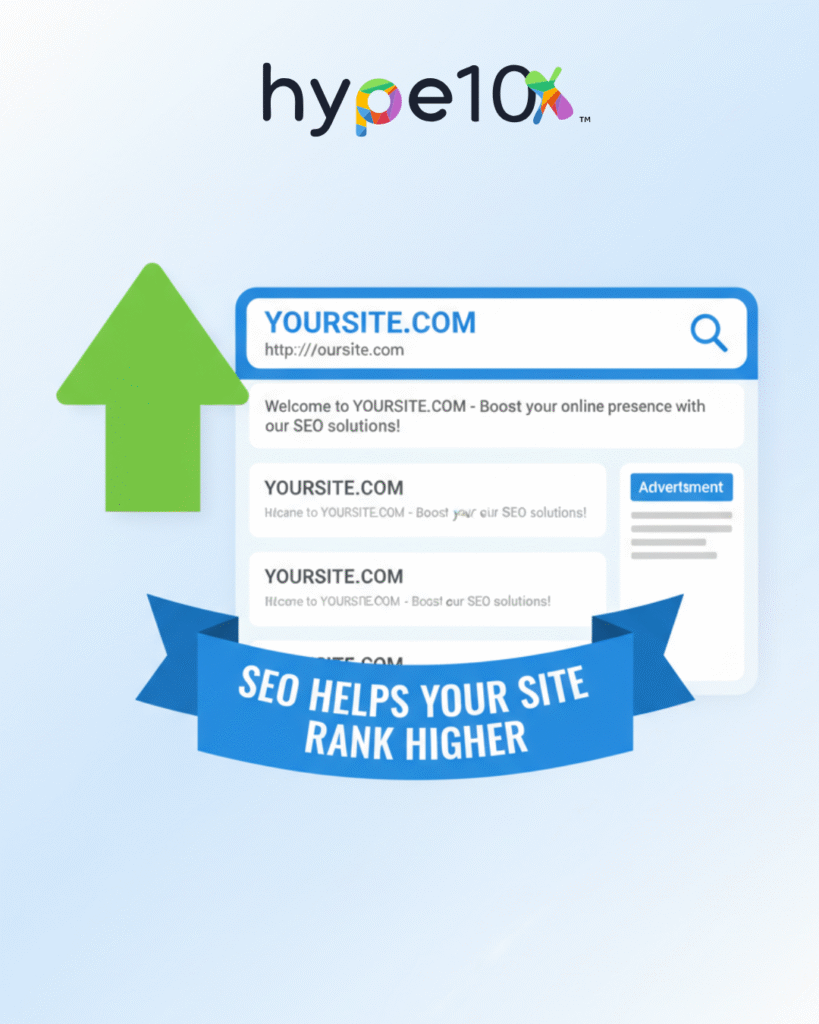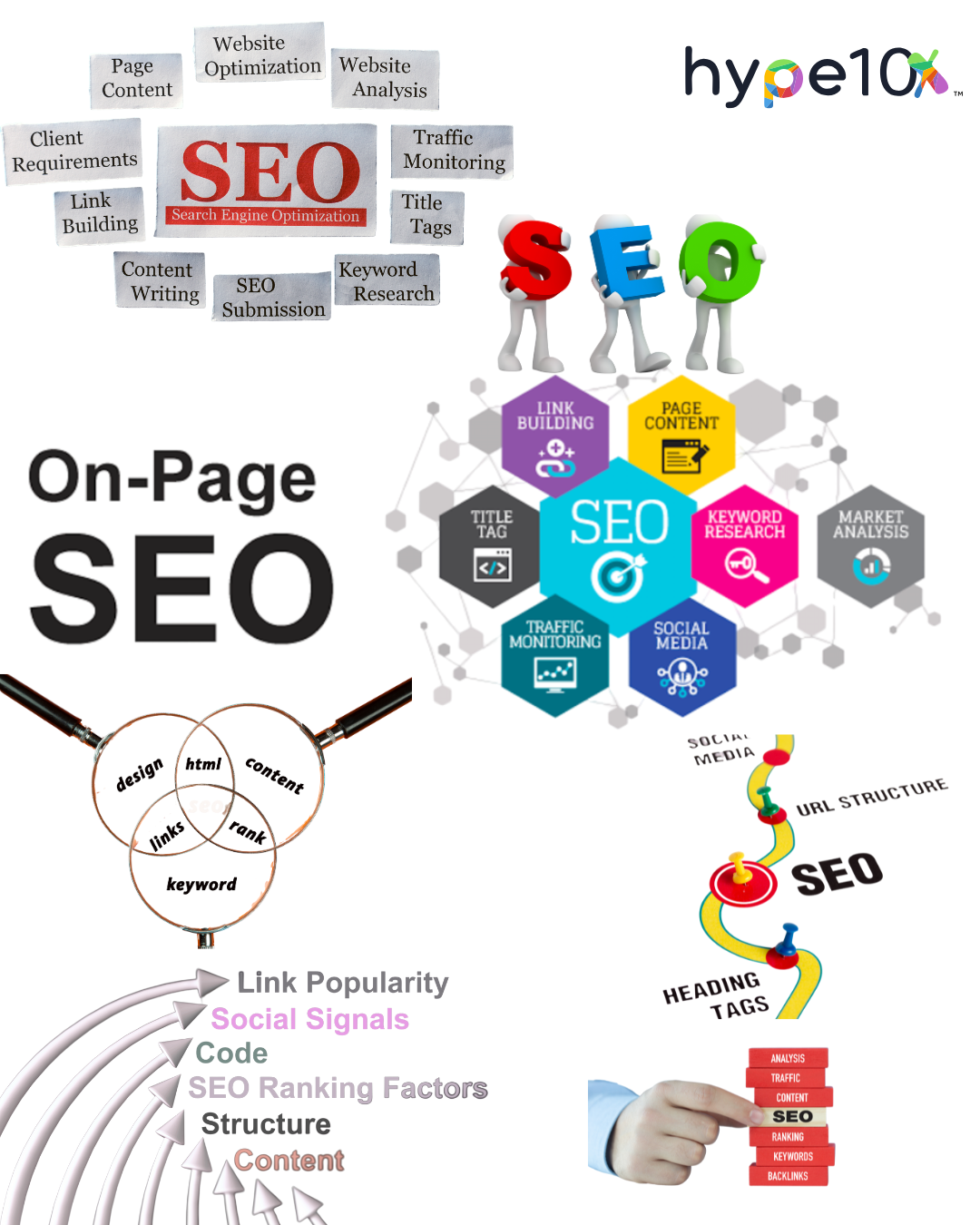In today’s digital world, having a website is not enough. You need people to find your site when they search online. This is where Search Engine Optimization (SEO) comes in. SEO is the process of improving your website so that it ranks higher in search engines like Google, Bing, or Yahoo. The higher your website appears in search results, the more likely people are to click and visit your site.
SEO is more than just a set of tricks or hacks—it’s about making your website user-friendly and relevant to the people searching for your products, services, or content. By focusing on SEO, businesses can attract the right audience, improve engagement, and boost conversions.

Key Elements of SEO
SEO is a combination of strategies and techniques that work together. Here are the main elements of SEO:
1. Keyword Research
Keyword research is the foundation of SEO. It involves finding the words and phrases people use when searching for products, services, or information related to your business. For example, if you sell handmade candles, relevant keywords could be “scented candles online,” “organic candles,” or “best handmade candles.”
Choosing the right keywords helps your content reach people who are most likely to be interested in what you offer. Tools like Google Keyword Planner, Ahrefs, or SEMrush can help you identify high-traffic and low-competition keywords.
2. On-Page SEO
On-page SEO refers to optimizing the content and structure of your website so that both users and search engines can understand it easily. Key on-page elements include:
- Title Tags: The main headline that appears in search results.
- Meta Descriptions: A short summary of your page that appears under the title in search results.
- Headings (H1, H2, H3): Properly structured headings make content easier to read and help search engines understand the hierarchy of information.
- Content Optimization: Use keywords naturally, write clear and helpful content, and include internal links to other relevant pages on your site.
- Image Optimization: Use descriptive filenames, alt text, and proper image sizes to improve loading speed and accessibility.
3. Technical SEO
Technical SEO ensures your website functions properly and meets search engine standards. Some important technical factors include:
- Website Speed: Fast-loading websites provide a better user experience and rank higher.
- Mobile-Friendliness: With more people using mobile devices, Google prioritizes mobile-optimized websites.
- Secure Website (HTTPS): Security is essential for trust, and Google favors secure sites.
- URL Structure: Clean, readable URLs help search engines and users navigate your site.
- Sitemaps & Indexing: Making it easier for search engines to crawl and index your site improves visibility.
4. Off-Page SEO
Off-page SEO refers to activities that happen outside your website but impact your rankings. This mainly involves building your site’s authority and trustworthiness. Common off-page SEO strategies include:
- Backlinks: Links from other reputable websites to your site act as votes of confidence.
- Social Signals: Engagement on social media platforms can indirectly improve visibility.
- Brand Mentions: Even without links, being mentioned on authoritative sites helps establish credibility.
5. Content Strategy
High-quality content is at the heart of SEO. Content should be informative, engaging, and relevant to your audience. It should also address user intent—what people are actually searching for. For example, a blog post titled “How to Choose the Right Handmade Candle for Your Home” targets users looking for guidance, not just sales.
A strong content strategy also involves regularly updating your content, answering common questions, and using visuals like images, infographics, or videos to make information easier to understand.
Why SEO is Important
SEO helps your website attract organic traffic—visitors who find you through search engines without paid ads. Organic traffic is valuable because it brings people who are actively looking for what you offer. Some benefits of SEO include:
- Higher Visibility: Appearing on the first page of search results increases brand awareness.
- Better User Experience: SEO practices like fast-loading pages, clear navigation, and mobile optimization improve the overall user experience.
- Cost-Effective Marketing: Unlike paid ads, organic traffic is free, making SEO a long-term investment.
- Trust and Credibility: Users tend to trust websites that rank higher in search results.
- Competitive Advantage: Companies that invest in SEO often outrank competitors who neglect it.
Tips for Effective SEO
- Focus on user intent, not just keywords. Understand what your audience wants and deliver it.
- Maintain high-quality, original content—avoid duplicate or thin content.
- Keep improving site speed and mobile performance.
- Build authentic backlinks from trustworthy websites.
- Monitor SEO performance using tools like Google Analytics or Google Search Console.
Conclusion
Search Engine Optimization is no longer optional—it’s essential for businesses that want to grow online. By combining keyword research, on-page and technical optimization, off-page authority, and valuable content, you can improve your website’s visibility, attract the right audience, and achieve long-term success. Remember, SEO is a continuous process. Regular updates, monitoring, and optimization are key to staying ahead in the ever-changing digital landscape.


